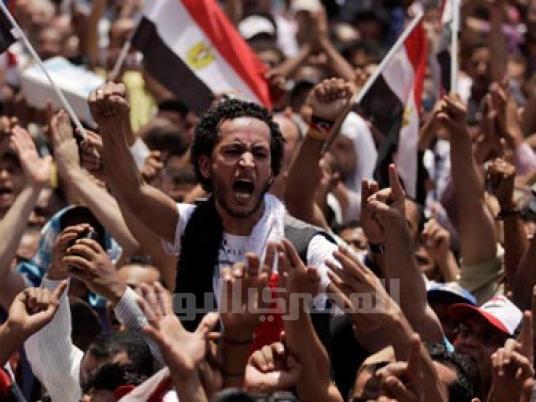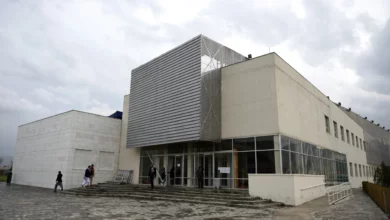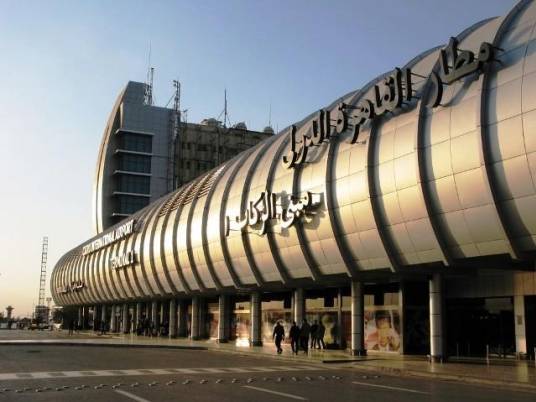
Grief runs deep for Hassan Osama, a student and member of a group that calls itself Ultras Revolution.
“I’ve had four friends die, there’s a fire inside [me] and all I can say is down with military rule.”
Osama marched with 1,500 students from various universities on Tuesday to Parliament, with demands that evoke many similar marches and protests over the past year: down with military rule and justice for those who have been killed, most recently in the violence at Port Said Stadium earlier this month and the downtown Cairo clashes that followed it.
There is a song that protesters sing to commemorate the tragic events of the Ahly-Masry game that left 74 dead, many of them teenage fans: “I wore a red T-shirt and went to Port Said. I came back in a white shroud and in my country became a Shahid (Martyr).”
With the momentum of protests having petered out recently, and the growing feeling that the revolution is caught between the Supreme Council of the Armed Forces and the Islamist-dominated Parliament, some are pinning their hopes on the student movement to keep the revolutionary spirit afloat. The student mobilization follows years of state-led suppression of any political activities on campus.
What little political life universities have engaged in, such as student unions, has typically been dominated by Islamists. Osama has little love for the Islamist majority in Parliament; he was detained on a previous march to the People’s Assembly that was halted by Brotherhood youth members.
The reinvigorated student movement has come under the spotlight in the wake of calls for a general strike on 11 February to commemorate Hosni Mubarak’s resignation on the same day last year. The strike was mainly observed on campuses, where students boycotted lectures. As the students from Cairo, Ain Shams and other universities marched through the city, chants about their new ambitions rang out, “Let them hear the voice of the students,” and “One student movement.”
Some students at the march said they felt they were shouldering responsibility for seeing the revolution through.
“This is now a corrective revolution because the demands of the revolution have not yet been met,” said Ain Shams University law student Mahmoud Ibrahim.
Ibrahim said various student movements are trying to coordinate with labor movements, the last bastions of resistance against the SCAF, he believes.
“We will be the ones to bury them, not them us,” he said, referring to military rulers.
Cairo University student activist Osama Ahmed believes student movements can coalesce into an effective grassroots organization.
“Our first role is to organize into popular committees and build a grassroots base that will talk openly about the revolution and keep its momentum going,” said Ahmed, who was one of the march organizers. There must be greater coordination between student movements and labor movements, he added, to create “popular legitimacy. This will happen over a long period of time but we aim to create a seed for popular authority and legitimacy.”
Yet this burgeoning student movement is still nascent and is faced with resuscitating itself after decades of stagnation and security clampdowns under Mubarak’s regime. And while student activism has grown since the outbreak of the revolution, it is still far from the levels seen during its heyday in the 1970s, according to activist Alaa Abd El-Fattah.
“It was stronger in our parents’ time; it was all the opposition we had along with the labor movement,” he said. “It was strongest in 1972 and 1977, and this led to the regime ensuring [student movements] never threatened them in such a way again.”
In 1972, students from across the country led a nationwide uprising demanding then-President Anwar Sadat fulfill his promise to reclaim Sinai, which had been taken from Israel following the 1967 war. Sadat had promised Egypt would launch a military campaign in 1971, but later gave various reasons in a 1972 speech why it was not the right time.
Now the movement is much weaker, Abd El-Fattah said, but the revolution has served as both motivator and as a catalyst for changes that now allow students the freedom to organize.
“It’s a good start and the student movement is definitely stronger than during my time in the 1990s,” he said, but more importantly this time around the movement “is more comprehensive, it is not split into ideological factions like in the past, where you had groups like the Islamists and Nasserists.”
The Tuesday march reached the Parliament building to be met with an iron gate on wheels and scores of Central Security Forces. Chants rang out in support of MP Zyad Elelaimy, who recently landed himself in hot water by likening SCAF head Hussein Tantawi to a donkey.
“What did Zyad do? Did he say the truth or what?” they chanted.
Yet the activists’ attitude toward Parliament was different than toward military rulers, whom most protesters hold responsible for the deaths of their compatriots over the past year. For the MPs, they were sending a warning, exemplified by the yellow cards they were holding.




